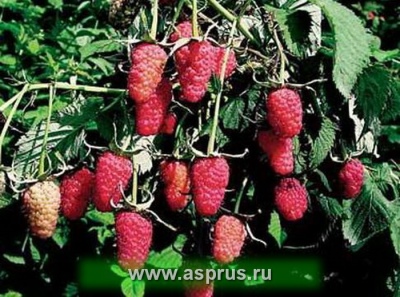
- Authors: Moscow, Institute of Horticulture (VSTISP), prof. V.V. Kichina
- Repairability: Yes
- Berry color: dark red
- Taste: sweet
- Ripening period: mid-early
- Berry weight, g: 4-12
- Yield: 5-6 kg per bush
- Frost resistance: medium
- Appointment: fresh consumption and for all types of home processing
- Fruiting period: from the first third of June
There are many varieties of sweet berries. Among them, the Arbat raspberry stands out more than convincingly. Gardeners need to understand its features, the nuances of berries and the intricacies of growing.
Breeding history of the variety
The Arbat variety was created at the Moscow Institute of Horticulture. Raspberry Arbat is the result of hybridization of Scottish varieties. Breeders sought to increase fertility and increase the size of individual berries. The result was presented in 1988. The Arbat was added to the state register in 1996.
Description of the variety
Ripening terms
This raspberry variety belongs to the mid-early group. Berry formation begins as early as June 1-10 (weather permitting). Normally, 4-5 crops are harvested during the season. The season ends in August. Specific dates are determined by meteorological conditions.
Growing regions
There are no fundamental barriers to the growth of Arbat raspberries in almost the entire territory of Russia. However, frost resistance is still quite limited. In the Urals, in the Leningrad region and in other cold places, special measures are needed to cultivate this variety. Violation of the basic recommendations threatens freezing.
Yield
The creators of the variety claim that one bush yields 5-6 kg of berries. Compared to other varieties, this is decent. The declared collection is not achieved immediately, but during the season. Drupes are dense. Therefore, premature shedding is excluded.
Berries and their taste
Raspberries of this variety are colored in a dark red tone. The oblong cone looks beautiful. The mass of a single fruit varies from 4 to 12 g. The sweet pulp is firm. It is also praised for its characteristic raspberry flavor.

Growing features
Site selection and soil preparation
The distance between plants is from 70 to 150 cm. No more than 8 bushes are allowed to be planted per 1 running meter. For large plantings, the row spacing should be at least 2.5 m. It is recommended to plant the crop on fertile loam and sandy loam. Cultivation of nightshades and strawberries is unacceptable.
Recommendations:
planting depth - 30 cm;
equipping the seat with brick or other drainage;
adding fertile soil.


Pruning
This procedure is carried out in the fall. It is supposed to harvest the shoots that have stopped bearing fruit. They must be removed at the root in order to exclude revival in the same place. Fresh shoots in August should be pinched 10-15 cm. This will help to activate the development of the bushes sideways and increase overall productivity. Spring pruning is optional but desirable.

Watering and feeding
They try to combine these procedures. Watering should be infrequent, but thorough, with water penetration by 55-60 cm. More and more gardeners are inclined to believe that it is necessary to feed the Arbat exclusively with organic matter. For the prevention of diseases, boric acid is added to the drinking solution. Moisture-charging irrigation is carried out both in spring and autumn. Foliar dressing is permissible only after sunset, in calm weather and in the absence of precipitation.


Frost resistance and preparation for winter
Watering requirements for this variety are significant. A short drought can be survived without significant yield losses. At winter temperatures down to –30 degrees, the safety of plants is guaranteed. It is not very necessary to bend and cover them. But in places where at least periodically there are stronger cold weather, covering work is required.


Unfortunately, raspberries, like other plants, do not bypass various diseases and pests. Only armed with the knowledge and the necessary means for this, you can cope with such troubles. To help the plant, it is very important to be able to recognize the disease in time and begin timely treatment.
Reproduction
Raspberries Arbat can be propagated by all methods available for this species. Both the use of root suckers and the division of the bush are quite effective. You need to work either at the very beginning of spring, or at the end of autumn. Fruiting raspberries are not propagated. It is best to separate the seedlings from the original plant one year after the start of cultivation. It is most correct to count on fruiting in the second year after planting the multiplied parts.








































































